A Guide to Perfectly Seasoning Your Cast Iron Skillet
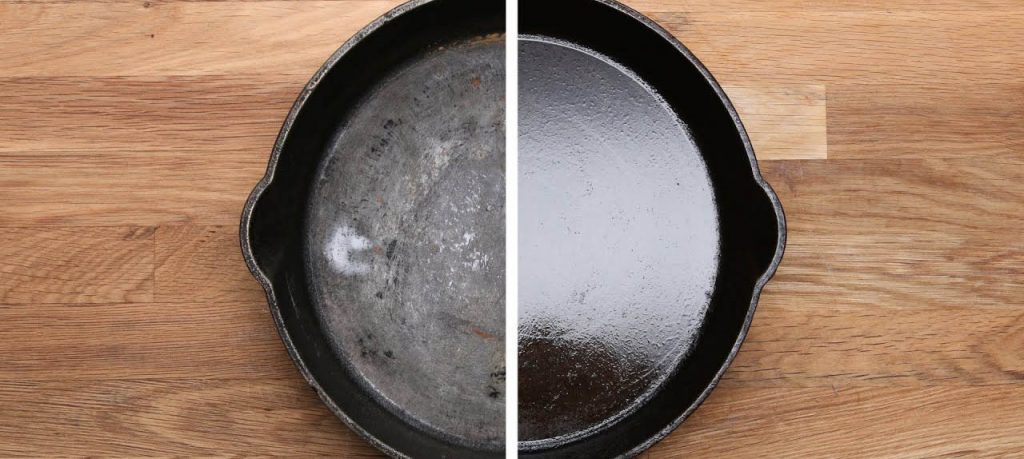
Cooking with a cast iron skillet is a time-honored tradition that spans generations. These durable, versatile kitchen companions can last a lifetime if properly cared for, and one of the key elements in maintaining their longevity is the process of seasoning. Seasoning a cast iron skillet not only protects it from rust but also imparts a non-stick surface that improves with each use.
Materials Needed:
Cast Iron Skillet: Whether it's a brand-new skillet or an heirloom piece, ensure that it's clean and free of any rust or residue.
Cooking Oil: Opt for oils with high smoke points, such as vegetable oil, canola oil, flaxseed oil, or grapeseed oil.
Paper Towels or Cloth: For applying and spreading the oil.
Aluminum Foil: To catch any oil drips during the seasoning process.
Oven: Preheat your oven to the recommended temperature for seasoning (usually around 375°F to 450°F).
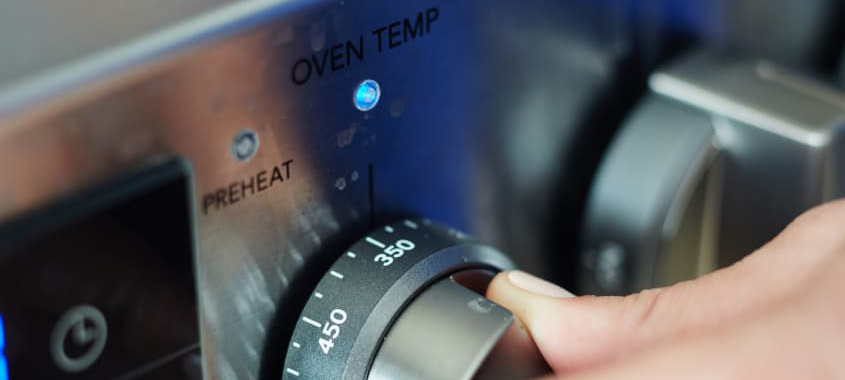
Step 1: Clean the Skillet
If you're working with a new skillet, wash it with warm, soapy water to remove any factory coatings. For older skillets, scrub off any rust or food residue using a stiff brush or steel wool. Dry the skillet thoroughly.
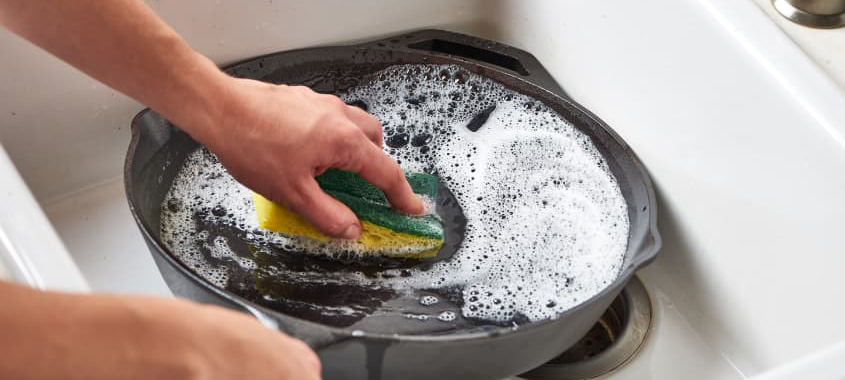
Step 2: Preheat the Oven
Place the skillet in the oven and preheat it to the desired seasoning temperature. This step helps open up the pores of the cast iron, allowing it to absorb the oil effectively.
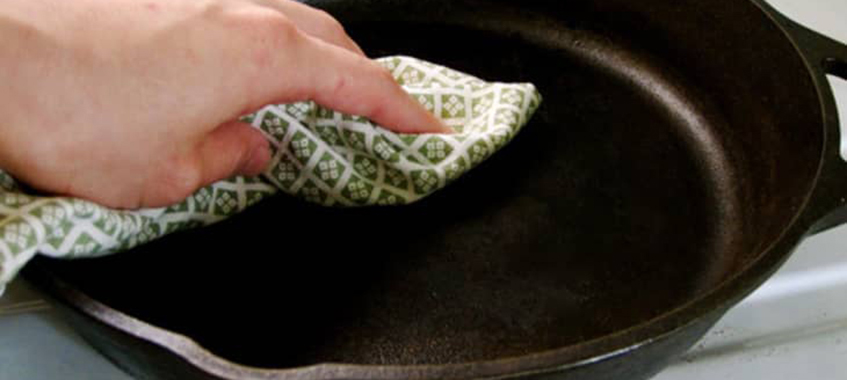
Step 3: Apply the Oil
Once the skillet is warm, remove it from the oven using oven mitts or potholders. Be cautious as it will be hot. Apply a thin layer of oil to the entire skillet, including the handle and exterior. Use a paper towel or cloth to spread the oil evenly, ensuring all surfaces are well-coated.
Step 4: Remove Excess Oil
To prevent the formation of sticky residues, wipe off any excess oil with a clean paper towel. The goal is to leave a thin, almost invisible layer of oil on the skillet.
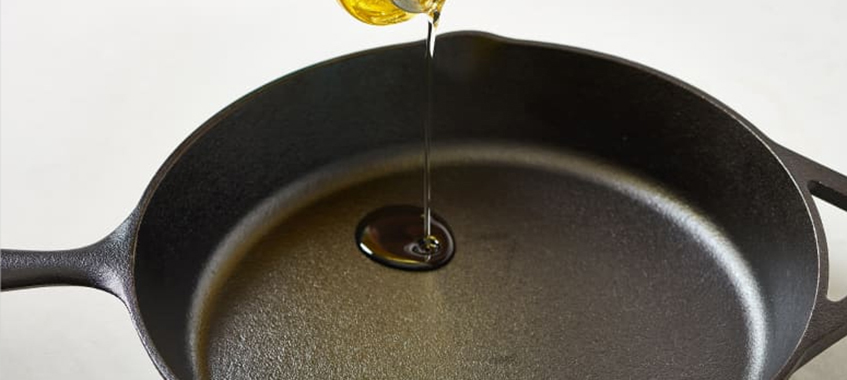
Step 5: Upside Down in the Oven
Place the skillet upside down in the oven on the middle rack. Put a sheet of aluminum foil on the rack below to catch any oil drips. This positioning allows any excess oil to drip away from the cooking surface, preventing pooling.
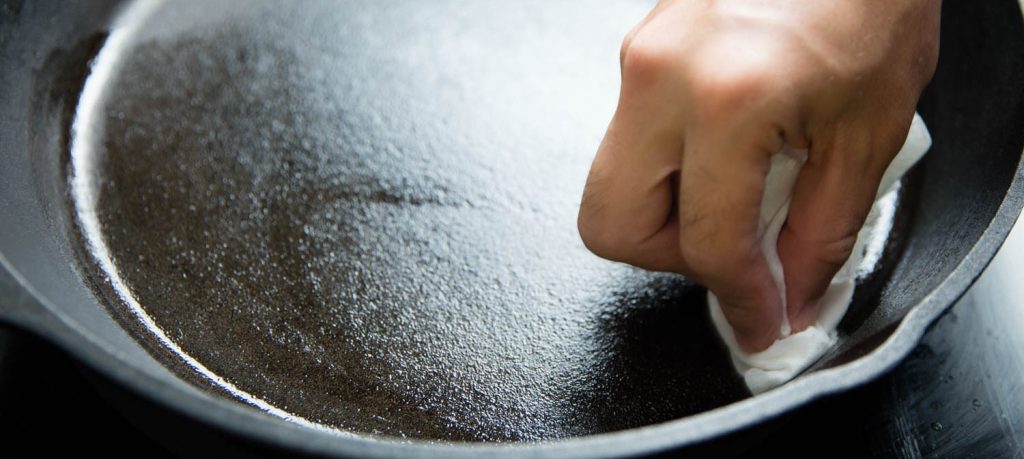
Step 6: Bake
Bake the skillet in the preheated oven for 1 to 1.5 hours. This process polymerizes the oil, creating a natural non-stick surface on the cast iron.
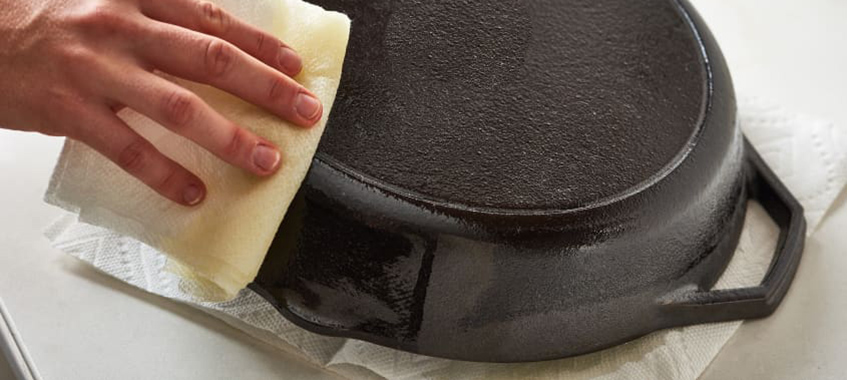
Step 7: Cool and Repeat
After the baking time is complete, turn off the oven and let the skillet cool completely before removing it. Repeat this seasoning process a few times, if possible, to build up a robust and effective non-stick coating.
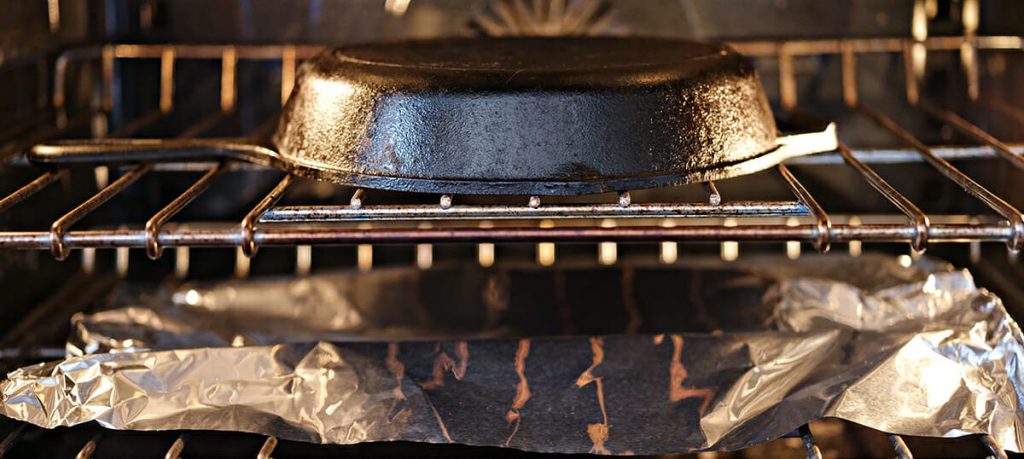
Seasoning a cast iron skillet is a simple yet essential process that transforms your cookware into a kitchen workhorse. Regular seasoning and proper maintenance will reward you with a skillet that only gets better with time, providing a reliable and non-stick surface for all your culinary adventures. So, roll up your sleeves, grab your favorite cooking oil, and embark on the journey of perfecting the art of seasoning your cast iron skillet.
